Sept. 18, 2018
Prelims Pointers
Sept. 18, 2018

Directorate General, Factory Advice and Labour Institutes (DGFASLI):
- It is an attached office of the Union Ministry of Labour & Employment.
- Objective: To assists the Ministry in formulating national policies on occupational safety and health in factories and docks.
- It is headquartered in
- It operates the following awards of the Ministry of Labour & Employment:
|
|
OBJECTIVE |
INSTITUTED IN |
|
VISHWAKARMA RASHTRIYA PURASKARS |
Presented to employees of factories, plantations and ports for outstanding suggestions made by them that have resulted in safety, improved working conditions, increased productivity or higher efficiency. |
1965. |
|
NATIONAL SAFETY AWARDS |
Presented to the management of factories and ports for best safety performance. |
Prelims Pointers
Sept. 18, 2018

About:
- She joined the civil services in 1951 and opted for the Madras cadre.
- She served in the Madras State under then Chief Minister C. Rajagopalachari and at the Central government.
- She also successfully executed the construction of India’s first computerised port Nhava Sheva (Jawaharlal Nehru Port) in Mumbai as its chairperson.
Prelims Pointers
Sept. 18, 2018

About:
- KAPS located in Surat district of Gujarat comprises of two units of indigenous 220 MW PHWRs (KAPS-1&2) which commenced commercial operation in 1993 and 1995 respectively. Two more units of 700 MW PHWRs (KAPP-3&4) are under construction at this site.
- KAPS-2 attained Criticality after completion of Renovation & Modernisation (R&M) works, encompassing En-Masse Coolant Channel Replacement (EMCCR), En Masse Feeder Replacement (EMFR) and other safety upgrades.
Criticality is a nuclear term that refers to the balance of neutrons in the system.
“Subcritical” refers to a system where the loss rate of neutrons is greater than the production rate of neutrons and therefore the neutron population (or number of neutrons) decreases as time goes on.
“Supercritical” refers to a system where the production rate of neutrons is greater than the loss rate of neutrons and therefore the neutron population increases.
When the neutron population remains constant, this means there is a perfect balance between production rate and loss rate, and the nuclear system is said to be “critical.” It ensures controlled self-sustaining nuclear fission chain reaction in the reactor.
Prelims Pointers
Sept. 18, 2018

Key summary of report:
- Technological changes such as high-speed mobile Internet and cloud technology, artificial intelligence, robots and automation will bring a significant shift to existing work tasks.
- In 2018, humans performed an average of 71% of total task hours across the 12 industries spanning manufacturing, services and high tech. By 2025, that will drop to just 48%, Machines will perform the remaining 52%.
- Globally, almost half of all companies expect automation to cut their full-time workforce in the next four years.
- However, if sufficient reskilling is done, new jobs will still lead to a net gain in employment opportunities. In India, 54% of employees in these sectors will need reskilling by 2022. Thus, reskilling and upskilling of employees as an urgent imperative.
Prelims Pointers
Sept. 18, 2018

About:
- Smart fencing uses a number of devices for surveillance, communication and data storage.
- The pilot project deployes laser-activated fences and technology-enabled barriers to plug vulnerable gaps along frontiers.
- The system provides for round-the-clock surveillance on the border in different weather conditions be it dust storm, fog or rain.
- The Pilot project of smart fencing was launched to make the maximum use of modern technology to make the security system at the borders stronger and more effective.
Prelims Pointers
Sept. 18, 2018

About:
- India is the first country in world to develop such a document (ICAP), which addresses cooling requirement across sectors and lists out actions which can help reduce the cooling demand.
- The overarching goal of ICAP is to provide sustainable cooling and thermal comfort for all while securing environmental and socio-economic benefits for the society.
Broad objectives of ICAP:
- Assessment of cooling requirements across sectors in next 20 years and the associated refrigerant demand and energy use,
- Map the technologies available to cater the cooling requirement including passive interventions, refrigerant-based technologies and alternative technologies such as not-in-kind technologies,
- Suggest interventions in each sector to provide for sustainable cooling for all,
- Focus on skilling of RAC service technicians, and
- Develop an R&D innovation ecosystem for indigenous development of alternative technologies.
Targets under ICAP:
- Recognition of “cooling and related areas” as a thrust area of research under national science and technology programme
- Reduction of cooling demand across sectors by 20% to 25 % by year 2037-38,
- Reduction of refrigerant demand by 25% to 30% by year 2037-38,
- Reduction of cooling energy requirements by 25% to 40% by year 2037-38, and
- Training and certification of 100,000 servicing sector technicians by the year 2022-23, in synergy with Skill India Mission.
World Ozone Day?
· World Ozone Day has been celebrated since 1994 and was established by the United Nations General Assembly to spread awareness of the depletion of the Ozone Layer and search for solutions to preserve it.
· It is celebrated on September 16th to mark the day back in 1987 when the Montreal Protocol was signed. The day is mainly intended
· "Keep Cool and Carry on”: The Montreal Protocol is the theme of 24th World Ozone Day celebrations.
Prelims Pointers
Sept. 18, 2018

About:
- Working: Hydrogen trains use fuel cells that produce electricity through a combination of hydrogen and oxygen, which leaves steam and water as the only emissions. Excess energy is stored in ion lithium batteries on board the train.
- Journey: This happened when Two Coradia iLint trains, built by French TGV-maker Alstom, began running a 100 km (62-mile) route between the towns and cities of Cuxhaven, Bremerhaven, Bremervoerde and Buxtehude in
- Significance: This signals a shift from polluting diesel trains with costlier but eco-friendly technology.
Prelims Pointers
Sept. 18, 2018

Shifting Cultivation:
- Shifting cultivation has been characterised by rotation of fields rather than rotation of crops, the exclusive use of human labour, use of dibble stick or hoe, and short periods of occupancy alternating with long fallow periods to assist the regeneration of vegetation.
- Shifting cultivation, locally referred to as jhum cultivation, is considered as an important mainstay of food production for a considerable population in northeast India in States like Arunachal Pradesh, Nagaland, Mizoram, Meghalaya, Tripura and Manipur.
Key findings of report:
- People were returning to fallows, land left after shifting cultivation in a shorter span than was earlier practice. Earlier the cultivators returned to fallows after 10-12 years, now they are returning in three to five years. This has impact on the quality of the soil.
- Decline of practise: Between 2000 and 2010, the land under shifting cultivation dropped by 70 %. From 35,142 sq km in 2000, the area under jhum cultivation dropped to 10,306 sq km in 2010.
- Reason: While shifting cultivation ensures food security it does not provide adequate cash for the families and thus they are shifting to regular agriculture, particularly to horticulture. The MGNREGA has also had an impact on reducing dependency of people on shifting cultivation.
Recommendations made:
- Ministry of Agriculture should take up a “mission on shifting cultivation” to ensure inter-ministerial convergence towards shifting cultivation.
- Recognise land for shifting cultivation as agricultural land under agro-forestry.
- Shifting cultivation fallows must be legally perceived and categorised as ‘regenerating fallows’.
- Extend credit facilities to those who practise shifting cultivation.
- To address nutritional security of communities involved in jhum cultivation, it recommends broadening the PDS to ensure widespread access to basic food items. This can be done by enlisting well-performing SHG cluster federations already established in several of the NE States.
Prelims Pointers
Sept. 18, 2018

About:
- This was proposed by the Alternative Mechanism comprising of its Chairperson, the Union Finance Minister Arun Jaitley and Cabinet Ministers, Piyush Goyal and Nirmala Sitharaman.
- The envisaged amalgamation will be the First-ever three-way consolidation of banks in India, with a combined business of Rs. 14.82 lakh crore, making it India’s Third Largest Bank.
- Background: The government had announced in the budget that consolidation of banks was also on the agenda. Earlier, the government had merged five subsidiaries of SBI into State Bank of India.
Strengths of the envisaged amalgamated entity are –
- Leveraging of networks, low-cost deposits and subsidiaries of the three banks will lead to substantial rise in customer base, market reach, operational efficiency, wider bouquet of products and services, and improved access for customers.
- The consolidation will help create a strong globally competitive bank. Global network strength of Bank of Baroda will be leveraged to enable customers of Dena Bank and Vijaya Bank to have global access
- Dena Bank’s strength in MSME will further augment the strength of the other two to position the amalgamated bank for being an MSME Udyamimitra
- Net NPA ratio at 5.71% significantly better than PSB average (12.13%). Provision Coverage Ratio (PCR) at 67.5% is well above Public Sector Banks (PSBs) average (63.7%).
Prelims Pointers
Sept. 18, 2018

About:
- The Minister released the National Museum Research Bulletin Number 10: Special issue (In House Publication) to generate awareness about the activities of National Museum.
- It has a number of research paper that highlight the collection, display and education aspect that the National Museum engages with.
- This research bulletin has been revived this time after a gap of 16 years under the guidance of the Director General, Dr B.R. Mani, who is also the Editorial -In-Chief of the Bulletin.
The National Museum of India, established in 1949 at New Delhi, holds variety of articles ranging from pre-historic era to modern works of art. It functions under the Union Ministry of Culture.
It also houses the National Museum Institute of History of Arts, Conservation and Museology, which was established in 1983 and now is a Deemed University since 1989. It runs Masters and Doctoral level courses in History of Art, Conservation and Museology.
Sept. 17, 2018
Prelims Pointers
Sept. 17, 2018
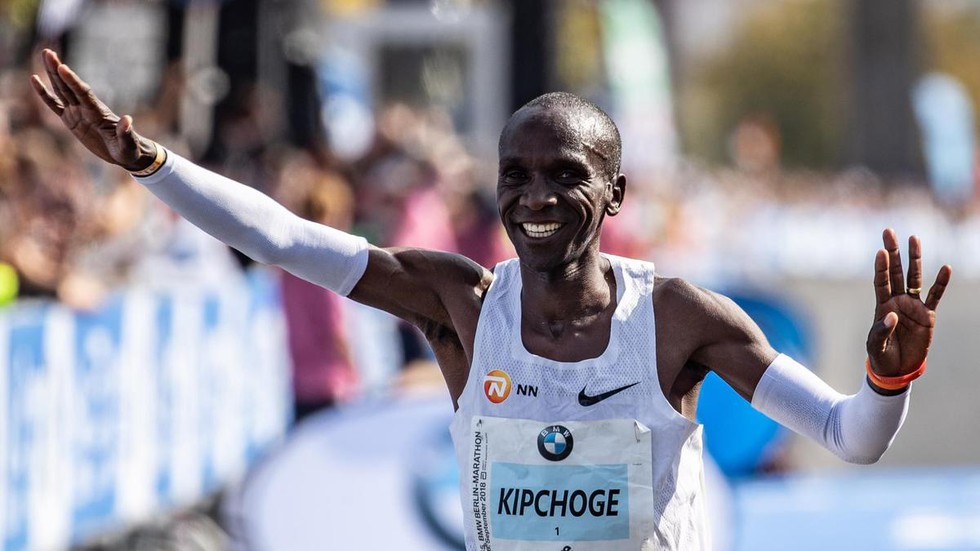
About:
- Kenyan Eliud Kipchoge set a new marathon world record in Berlin, smashing the previous best as he clocked 2-hour 1 minute 39 seconds.
- The 33-year-old Olympic champion took 1 minute 17 second off the previous best set four years ago by Dennis Kimetto.
It was the largest single improvement on the marathon world record since Derek Clayton improved the mark by 2:23 in 1967
Prelims Pointers
Sept. 17, 2018

About:
- NovaSAR: It is a technology demonstration mission designed to test the capabilities of a new low-cost S-band SAR platform. It will be used for ship detection and maritime monitoring.
- S1-4: It will be used for environment monitoring, urban management, and tackling disasters.
- The two satellites are owned by Surrey Satellite Technology Ltd (SSTL).
- The commercial arm of ISRO, Antrix Corporation, earned more than ₹220 crore on this launch.
Prelims Pointers
Sept. 17, 2018

Key Findings of the Report:
- Polluted Stretches: The number of polluted stretches in India’s rivers has increased to 351 from 302 two years ago.
- Critically Polluted Stretches: The number of critically polluted stretches — where water quality indicators are the poorest — has gone up to 45 from 34.
- Maharashtra, Assam and Gujarat account for 117 of the 351 polluted river stretches.
- Ganga with a BOD range of 3.5-8.8 mg/l is indicated as a ‘priority 4’ river.
The most significant stretches of pollution highlighted by the CPCB assessment include the:
- Mithi river — from Powai to Dharavi — with a BOD (Biochemical Oxygen Demand) of 250 mg/l,
- Godavari — from Someshwar to Rahed — with a BOD of 5.0-80 mg/l;
- Sabarmati — Kheroj to Vautha — with a BOD from 4.0-147 mg/l; and
- Hindon — Saharanpur to Ghaziabad — with a BOD of 48-120 mg/l.
The CPCB, since the 1990s, has a programme to monitor the quality of rivers primarily by measuring BOD, with a BOD greater than or equal to 30 mg/l termed ‘priority 1,’ while that between 3.1-6 mg/l is ‘priority 5.’
The CPCB considers a BOD less than 3 mg/l an indicator of a healthy riv
Prelims Pointers
Sept. 17, 2018

About:
- The MPATGM is a third-generation anti-tank guided missile (ATGM), which has been under development by DRDO in partnership with Indian defense contractor VEM Technologies Ltd. since 2015.
- Fitted with a High-Explosive Anti-Tank (Heat) Warhead, the MPATGM reportedly boasts a top attack capability and has a maximum engagement range of about 5 kilometers.
Prelims Pointers
Sept. 17, 2018

About:
- It is a joint military training exercise between India and U.S.
- This will be the 14th edition of the joint exercise hosted alternately between the two countries.
- Both sides will jointly train, plan and execute a series of well-developed tactical drills for neutralisation of likely threats that may be encountered in UN peace keeping operations.
Prelims Pointers
Sept. 17, 2018

About:
- Test Practice Centres (TPCs) will be setup in rural areas so that students will have an opportunity to practice before appearing for following entrance exam conducted by NTA: (1) UGC-NET, (2) JEE Main and (3) CMAT & GPAT
- Under it, 2,697 Schools/engineering colleges with computer centres are being made available on every weekend (w.e.f 1st September, 2018). Any student can use the facility free of charge.
- The TPCs will have a downloaded Computer Based Test (CBT) which will be similar to the actual test to be conducted on the exam day.
National Testing Agency (NTA)?
Objective: In 2017, Union Cabinet has approved the creation of NTA.
Objective: To conduct “all entrance examinations for higher educational institutions” which were being conducted by the CBSE) and AICTE.
Status: It is an autonomous and self-sustained organization registered under the Indian Societies Registration Act, 1860.
Prelims Pointers
Sept. 17, 2018

About:
- Origin: In 2007 the United Nations General Assembly resolved to observe 15 September as the International Day of Democracy.
- Objective: Promoting and upholding the principles of democracy.
- 2018 Theme: “Democracy under Strain: Solutions for a Changing World”.
Prelims Pointers
Sept. 17, 2018

About:
- Hurricanes, cyclones, and typhoons are all the same weather phenomenon; Just different names are used for these storms in different places.
- In the Atlantic and Northeast Pacific, the term “hurricane” is used.
- The same type of disturbance in the Northwest Pacific is called a “typhoon” and “cyclones” occur in the South Pacific and Indian Ocean.
Prelims Pointers
Sept. 17, 2018

About:
- It is a festival of tourism being organised by Union Tourism Ministry in collaboration with other Central Ministries, State Governments and Stakeholders.
- It will be held from the 16th to 27th September, 2018 across several cities and iconic tourism destinations in the country.
- Objective of this festival is to: (1) To draw focus on the benefits of tourism, (2) To showcase the cultural diversity of the country and (3) To reinforce the principle of Tourism for All.
Prelims Pointers
Sept. 17, 2018

Ustad Iqbal Ahmed Khan:
- Ustad Iqbal Ahmed Khan is an Indian classical vocalist belonging to the Dilli (Delhi) gharana.
Dilli gharana:
- The Dilli gharana was started to popularise and preserve the works of poet Amir Khusro (1253-1325).
- It is the oldest of the tabla gharanas and the first to establish improvisation rules.
- Delhi tabla style is famous for its vast and rich repertoire of Bols such as dha, tete (tite), terekete and tinnakena are prominent. The temperament and style of playing is generally soft.
International Maqom Festival:
- The international music festival, initiated by Uzbekistan’s President Shavkat Mirizoyev, is as much a cultural exchange, as part of the President’s ambitious plans to strengthen cultural ties across the region.
Do you know?
Maqom is the oriental system of music that is enhanced by string and percussion instruments across Asia.
Sept. 16, 2018
Prelims Pointers
Sept. 16, 2018

About:
- On September 6, the Union Ministry of Environment notified the Prevention of Cruelty to Animals (Pet Shop) Rules, 2018, which puts in place new directions to regulate pet shops to prevent abuse of animals.
- In absence of specific rules in place, the pet shops across the country are currently being operated without any regulation. As a result, many of them grossly violate the Wildlife Protection Act, 1972 by blatantly selling wild animals.
Salient Features:
- No person can operate a pet shop or carry on with the business of trade in pet animals without a certificate of registration from the State Animal Welfare Board
- The rules provide standards for accommodation, infrastructure, housing, general care, veterinary care and other operational requirements.
- These include elimination of wire mesh for the floors of the enclosures, a health certificate from a veterinary practitioner for every animal on sale, and a written exercise plan for any pup over 16 weeks of age.
- Besides registration under the rules, a separate application will have to be made for every pet shop or any premises being used for the pet trade. Such a certificate will be valid for a period of one year. It’ll be non-transferable, and subject to review.
- Every pet shop owner will now have to maintain a record book with the particulars of breeders and suppliers of pet animals, trade transactions and their details.
- Animals found to be ill-treated or sick will be confiscated and sent to a recognized animal welfare organization for treatment. The pet shop owner will be liable for any expenses incurred for the care and treatment of such animals.
Prelims Pointers
Sept. 16, 2018

Corals:
- Corals are animals which live in a symbiotic relationship with microscopic algae called zooxanthellae (which live within the coral tissue).
- The zooxanthellae convert sunlight into food, providing corals with up to 90 per cent of their energy needs. They also give corals much of their colour.
Coral bleaching:
- Bleaching occurs when stressful conditions, such as heat, cause this relationship to break down, resulting in the corals expelling their zooxanthellae. This leaves the coral tissue mostly transparent, revealing the coral's bright white skeleton.
- This loss of their symbiotic algae means bleached corals are essentially starving.
Prelims Pointers
Sept. 16, 2018

About:
- ICESat-2 is NASA’s most advanced space laser satellite with the objective of tracking ice loss around the world and improve forecasts of sea level rise as the climate warms.
- It will help estimate elevation change in the Greenland and Antarctic sheets.
- The preceding mission, ICESat, launched in 2003 and ended in 2009. It revealed that sea ice was thinning, and ice cover was disappearing from coastal areas in Greenland and Antarctica.
Prelims Pointers
Sept. 16, 2018
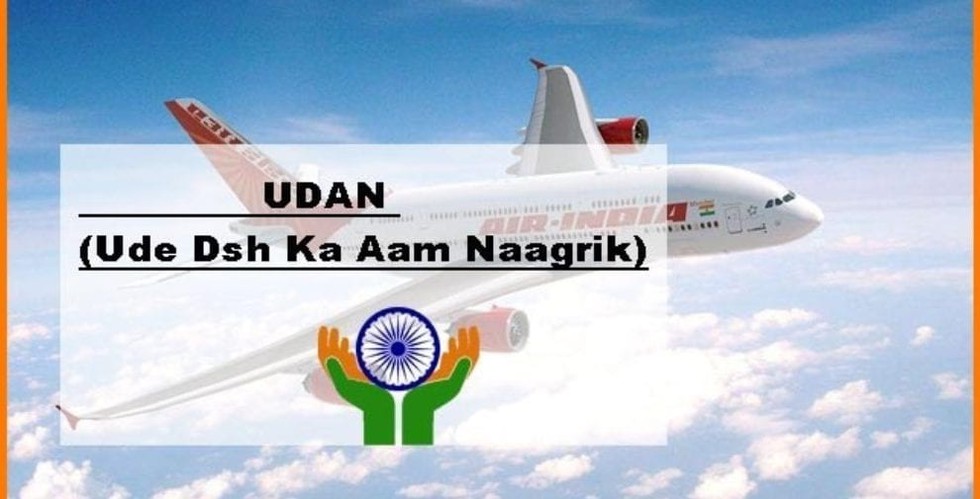
About:
- UDAN is an acronym for “Ude Desh Ka Aam Nagrik”.
- It is a Regional Air Connectivity Scheme (RCS) which attempts to connect smaller towns with bigger cities to develop the regional aviation market.
- The scheme UDAN envisages providing connectivity to un-served and under-served airports of the country through revival of existing air-strips and airports.
- It will create affordable yet economically viable and profitable flights on regional routes so that flying becomes affordable to the common man even in small towns.
- It was officially launched in April 2017.
Prelims Pointers
Sept. 16, 2018
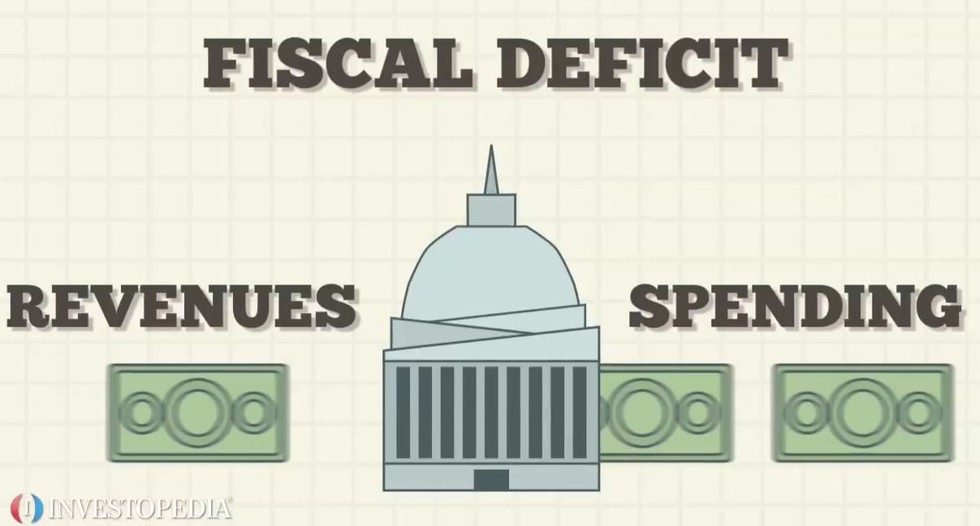
About:
- The difference between total revenue and total expenditure of the government is termed as fiscal deficit. It is an indication of the total borrowings needed by the government. While calculating the total revenue, borrowings are not included.
- The gross fiscal deficit (GFD) is the excess of total expenditure including loans net of recovery over revenue receipts (including external grants) and non-debt capital receipts.
- The net fiscal deficit is the gross fiscal deficit less net lending of the Central government.
- Reason: Generally fiscal deficit takes place either due to revenue deficit or a major hike in capital expenditure. Capital expenditure is incurred to create long-term assets such as factories, buildings and other development.
- Deficit financing: A deficit is usually financed through borrowing from either the central bank of the country or raising money from capital markets by issuing different instruments like treasury bills and bonds.
Prelims Pointers
Sept. 16, 2018
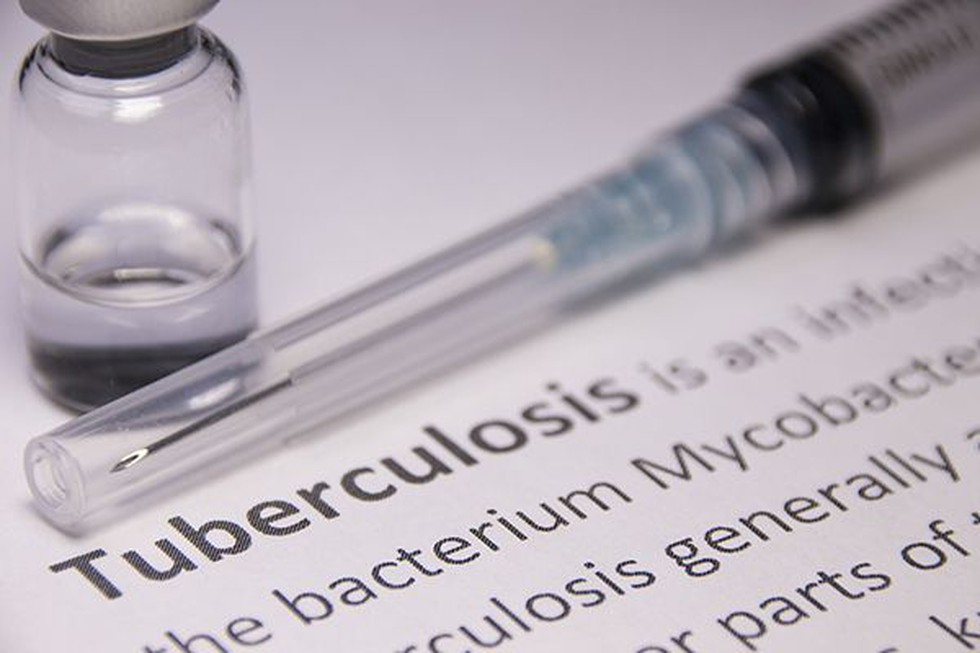
About:
- The text of a final declaration will be formally adopted at the first-ever TB summit on September 26 in New York.
- At the summit world leaders will commit to end the tuberculosis epidemic by 2030 and come up with USD 13 billion annually to achieve that goal, according to the 53-point final declaration.
- An additional USD 2 billion will be spent globally to fund tuberculosis research — up from USD 700 million currently.
- The final declaration is an improvement from the first draft.
Background:
- In July, South Africa clashed with the United States over proposals to water down language recognising the right of poorer countries to access cheaper medicines.
- The contested language referred to the so-called TRIPS trade arrangements dealing with intellectual property rights. A compromise was reached that strengthened references to TRIPS.
Prelims Pointers
Sept. 16, 2018

About:
- Under this, Navy will procure six advanced conventional submarines processed through the Strategic Partnership (SP) model.
- These will be diesel-electric submarines, having advanced Air-independent propulsion (AIP) systems to enable them to stay submerged for longer duration and substantially increase their operational range.
- The project, estimated to cost over 60,000 crore.
Prelims Pointers
Sept. 16, 2018
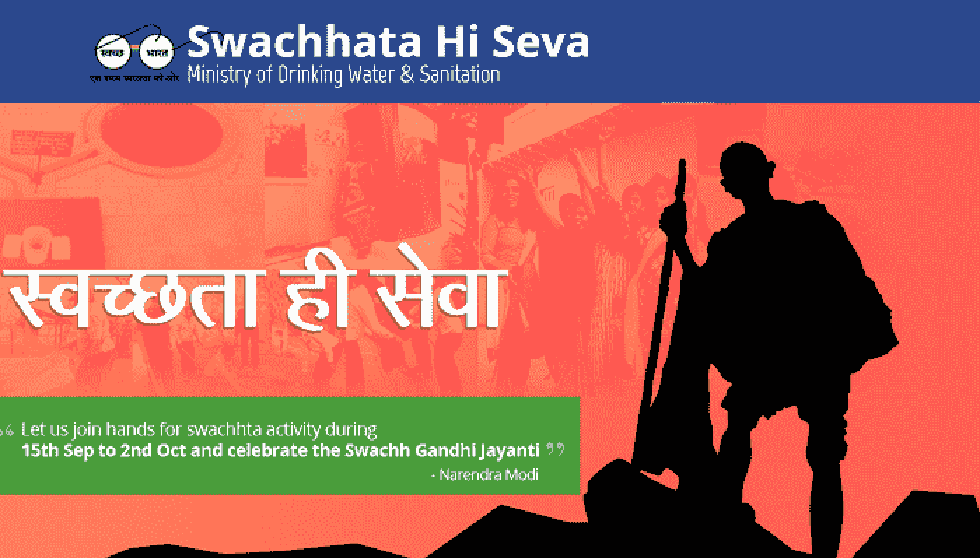
Context:
- The campaign has been launched to push for greater public participation in Swachh Bharat Abhiyan which was launched on October 2, 2015.
- It is being organized in the run up to the fourth anniversary of the Swachh Bharat Mission, on October 2nd, 2018, which will also mark the commencement of the 150th year celebrations of Mahatma Gandhi.
Prelims Pointers
Sept. 16, 2018
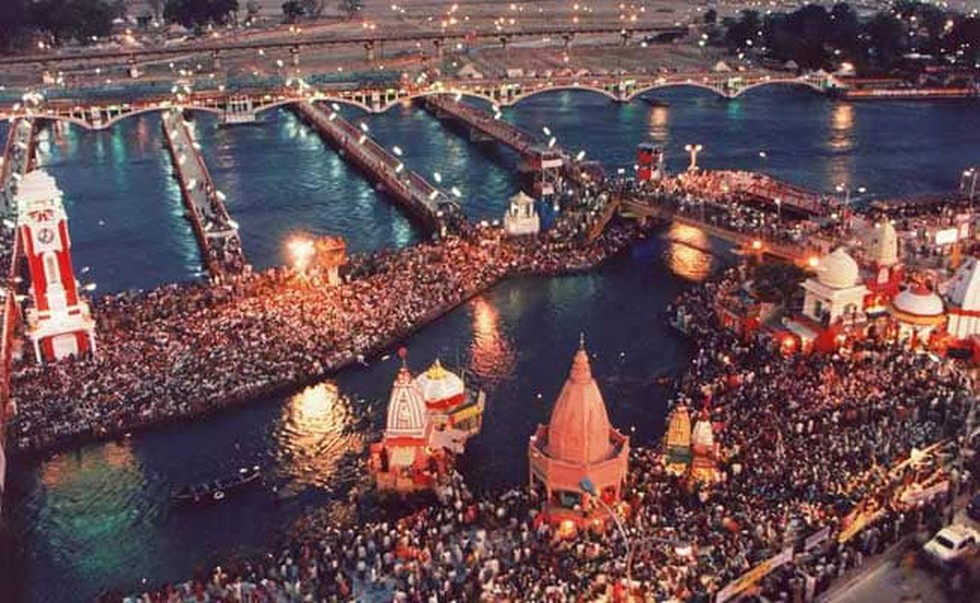
About:
- According to UNESCO, Kumbh Mela (the festival of the sacred Pitcher) is the largest peaceful congregation of pilgrims on earth attended by millions of people. The congregation includes ascetics, saints, sadhus, aspirants-kalpavasis and visitors.
- During it, participants bathe or take a dip in a sacred river as they believe that by doing this one gets freed from sins and thus liberating her/him from the cycle of birth and death.
- The festival is held at Allahabad, Haridwar, Ujjain and Nasik every four years by rotation. As it is held in four different cities in India, it involves different social and cultural activities, making this a culturally diverse festival.
- At any given place, the Kumbh Mela is held once in 12 years. There is a difference of around 3 years between the Kumbh Melas at Haridwar and Nashik; the fairs at Nashik and Ujjain are celebrated in the same year or one year apart.
- At Haridwar and Allahabad, an Ardha ("Half") Kumbh Mela is held every sixth year.
Prelims Pointers
Sept. 16, 2018

About:
- During the summer months the sun stays visible for a longer time and sunset happens late in the day. For this reason, certain countries advance the time by one hour near the start of summer and put it back one hour during autumn.
- The time during summer is called Daylight saving time(DST). In Europe it is called Summer time.
- Arguments in favor: The difference in sunrise/sunset time between the eastern & western parts in India is large. Since day breaks earlier in the east, a different time zone could allow people there to start working sooner. This could lead to energy saving and productivity gains.
- Arguments against DST: Having a different time-zone may pose difficulties for airlines, railways and communication services.
Sept. 15, 2018
Prelims Pointers
Sept. 15, 2018

About:
- Visvesvaraya (1861 – 1962) was an Indian engineer, scholar, statesman.
- He was the chief engineer responsible for the construction of the Krishna Raja Sagara dam in Mandya district. He was also the chief designer of the flood protection system for the city of Hyderabad.
- He also served as the Diwan of Mysore from 1912 to 1918. It was during his period as Dewan that the Mysore Soap Factory (which makes the iconic Mysore sandal soap), the Bangalore Agricultural University, the Bank of Mysore and the Bangalore Press were set up.
- He penned his autobiography, Memoirs of my Working Life, in 1951.
- “Industrialise or Perish” was Visvesvaraya’s mantra.
Honours:
- In 1915, He was knighted as a Knight Commander of the British Indian Empire (KCIE) by King George V for his contributions to the public good.
- He received Bharat Ratna, in 1955.
- He is held in high regard as a pre-eminent engineer of India. 15 September is celebrated as Engineer's Day in India in his memory.
Prelims Pointers
Sept. 15, 2018

Report Summary:
The report covered 11 markets in the Non-Japan Asian region, which continue to dominate and represent 53 % share of the world, with a total market capitalisation of over USD 4 trillion. Key findings of the report are –
- India ranks third globally in terms of the number of family-owned businesses with 111 companies of USD 839 billion total market capitalisation, followed after China with 159 firms and the United States with 121 firms
- Within the non-Japan Asian region, China, India and Hong Kong together comprise around 65% of the non-Japan Asian section of the CSRI's database
- Out of the top 50 most profitable companies globally, 24 were from Asia. The list included 12 Indian family-owned companies.
- In Non-Japan Asia, more than 50 % of the top 30 best-performing companies are from India, followed by one-third from China.
Do You Know?
The Credit Suisse Research Institute (CSRI) is Credit Suisse's in-house think tank. The Institute was established in the aftermath of the 2008 financial crisis with the objective of studying long-term economic developments.
Credit Suisse Group AG is a Swiss multinational investment bank and financial services company.
Prelims Pointers
Sept. 15, 2018

About:
- Bodies involved: The Chiller Star Labelling Program has been formulated by Bureau of Energy Efficiency (BEE).
- Objective: The program envisages providing star rating in terms of its energy performance.
- Timeline: Initially, the program is launched on voluntary basis and will be valid upto 31st December 2020.
Strategy:
- BEE has developed an online registration platform for easy and expeditious approval under this initiative. The manufacturers will be able to register online for availing appropriate star rating of chiller equipment.
- Based on the test certificate from designated agencies and after due verification from BEE, the star label (1 to 5) will be awarded, with 5 star being the most efficient chillers.
Significance:
- Chillers are used extensively for space conditioning of buildings and for industrial process cooling applications. Thus, it is important to optimize energy performance of chillers.
- Through this Program, it is estimated that more than 500 million units of electricity would be saved in 2019 along with Green House Gases (GHG) reduction of 0.5 million-ton equivalent of CO2.
Prelims Pointers
Sept. 15, 2018

About:
- Masala bonds are essentially bonds issued by Indian companies, denominated in rupees, to overseas investors to attract funds for projects, especially in infrastructure.
- They are different from dollar bonds as In Dollar bonds, the borrower takes the currency risk. But in Masala bonds, the investors bear the currency risk.
History of Masala bonds:
- The first Masala bond was issued by The International Finance Corporation (IFC), the private arm of the World Bank, in November 2014 to fund infrastructure projects in India. Masala, a Hindi word, means spices was used by IFC to evoke the cuisine and culture of India.
- In August 2015 IFC issued green Masala bonds to fund climate change initiatives in India.
- In July 2016 HDFC became the first Indian company to issue Masala bonds. It raised Rs. 3,000 crore rupees from Masala bonds.
Need of Masala Bonds:
- Indian corporates have for long borrowed in international credit markets — in the form of loans and bonds, and in various foreign currencies. This always came with the risk of the company having to pay more while repaying its debt.
- By issuing bonds in rupees in the overseas markets, the risk is transferred to investors who sign up for that, taking into account the growth prospects of the country and the issuing company.
- From the issuer’s perspective, it means cheaper borrowings compared to raising funds in India besides diversifying its sources of fund-raising.
Prelims Pointers
Sept. 15, 2018

Background:
- The current system of coal block allocation via e-auctions was put in place after the cancellation of 204 coal-block allocations in 2015
- However, the e-auctions failed to sustain interest as companies which bought the blocks found it cheaper to import coal to meet their requirements rather than developing the mines.
- There were no takers for subsequent blocks, forcing the Centre to do a rethink.
- In July 2018, a High-Powered Expert Committee (HPEC) chaired by Pratyush Sinha submitted its report suggesting major changes in the coal block auction system.
Recommendations:
- The recommendation of Pratyush Sinha committee coincides with the opening up of the coal sector for commercial mining.
- These recommendations rest on four tenets — ensuring transparency and fairness, equity, early development of coal blocks and simplicity of implementation.
- Key recommendation:
- Developing a Coal Index for determining the value of blocks. Currently, the valuation is on the basis of the notified price of Coal India Ltd.
- Scrap the current practice of cancelling an auction if the number of bidders is less than three. Instead a single-bid should be accepted if biddings fail to find eligible bidders.
- Only a default in achieving critical milestones should attract penalty against the earlier penalty for each default.
- Developing a Coal Index for determining the value of blocks. Currently, the valuation is on the basis of the notified price of Coal India Ltd.
Prelims Pointers
Sept. 15, 2018

About:
- PMMVY was previously known as Indira Gandhi Matritva Sahyog Yojana (IGMSY) which was launched in 2010. On the 2017 New Year’s Eve, PM Modi announced the Pan-India implementation of this scheme w.e.f. 01st January, 2017.
- It is a conditional cash transfer scheme for pregnant and lactating women of 19 years of age or above for first two live births.
- It provides a partial wage compensation to women for wage-loss during childbirth and childcare and to provide conditions for safe delivery and good nutrition and feeding practices.
- The latest Draft guidelines for its implementation provides for Aadhaar linkage and Direct Benefit Transfer of Rs. 5000 in beneficiary’s bank/post office account in three instalments.
Prelims Pointers
Sept. 15, 2018

Recent directions by Supreme Court to Centre and states:
- Conduct Periodic National Surveys to determine the prevalence rate.
- Formulate a comprehensive community-based rehabilitation scheme which shall cater to all basic needs of the leprosy-afflicted persons and their families.
- Integrate treatment of leprosy into general health care, which will usher in a no-isolation method in general wards and OPD services.
- Give wide publicity to the activities of the National Leprosy Eradication Programme (NLEP).
- Discontinue using “frightening images” of people afflicted with leprosy in the awareness programmes and instead use “positive images of cured persons sharing their experiences of being cured of leprosy”.
- Ensure that drugs for management of leprosy and its complications are available free of cost and that they do not go out of stock in Primary Health Centres (PHCs).
Do you know?
Leprosy, also known as Hansen's disease (HD), is caused by a bacillus, Mycobacterium leprae.
Although not highly infectious, leprosy is transmitted via droplets, from the nose and mouth, during close and frequent contacts with untreated cases.
If untreated, it can cause permanent damage to skin and peripheral nerves.
Leprosy is curable with multidrug therapy (MDT).
National leprosy eradication program was launched in 1983 by Government of India to treat leprosy affected people.
Prelims Pointers
Sept. 15, 2018

Background:
- NACO undertakes HIV estimations biennially in collaboration with the Indian Council of Medical Research (ICMR) - National Institute of Medical Statistics (NIMS).
- The first round of HIV estimation in India was done in 1998, while the last round was done in 2015.
- The HIV Estimations 2017 is the 14th round in the series of HIV Estimations under National AIDS Control Programme (NACP).
Key findings of the report:
- India had around 21 lakh people living with HIV (PLHIV) with adult prevalence of 0.22%.
- Around 87 thousand new HIV infections and 69 thousand AIDS related deaths happened in 2017.
- 22,675 mothers needed Antiretroviral Therapy (ART) for prevention of mother to child transmission of HIV.
- Overall, the impact of the NACP has been significant with more than 80% decline in estimated new infection from peak of epidemic in 1995. Similarly, estimated AIDS related death declined by 71% since its peak in 2005.
- But there is no place for complacency as country move forward on ambitious goal of attaining the ‘End of AIDS’ by 2030.
Prelims Pointers
Sept. 15, 2018

About:
- Norway, Switzerland, Australia, Ireland and Germany lead the ranking.
- Niger, the Central African Republic, South Sudan, Chad and Burundi have the lowest scores.
- The overall trend globally is toward continued human development improvements: out of the 189 countries for which the HDI is calculated, 59 countries are today in the very high human development group and only 38 countries fall in the low HDI group.
- South Asia experienced the fastest HDI growth among developing regions with a 45.3 % increase since 1990. South Asia has the widest gap between men and women in HDI at 16.3%.
India’s Ranking:
- India climbed one spot to 130 out of 189 countries in the latest rankings.
- India’s HDI value for 2017 is 0.640, which put the country in the medium human development category.
- Between 1990 and 2017, India’s HDI value increased from 0.427 to 0.640 (an increase of nearly 50%), life expectancy at birth increased by nearly 11 years, Indian school-age children can expect to stay in school for 4.7 years longer and GNI per capita increased by a 266 %.
- Within South Asia, India’s HDI value is above the average of 0.638 for the region, with Bangladesh and Pakistan being ranked 136 and 150 respectively.
- 8 % of India’s HDI value is lost on account of inequalities -- a greater loss than for most of its South Asian neighbours (the average loss for the region is 26.1 percent). This confirms that inequality remains a challenge for India as it progresses economically.
- India performs better than its neighbours Bangladesh and Pakistan, ranking 127 out 160 countries on the Gender Inequality Index.
Do you know?
The HDI is the composite measure of every country’s attainment in three basic dimensions:
(1) standard of living measured by the gross national income (GNI) per capita,
(2) health measured by the life expectancy at birth, and
(3) education levels calculated by mean years of education among the adult population and the expected years of schooling for children.
Prelims Pointers
Sept. 15, 2018

About:
- It is an annual day celebrated on 14 September because Hindi language was first adopted by the Constituent Assembly of India as the official language of India on September 14, 1949.
- It is mostly a government sponsored event in Central government of India offices, firms, schools and other institutions which aims to promote Hindi language. It is celebrated by organizing feasts, events & competitions.
- Rajbhasha Awards, introduced in 2015 are also conferred upon on this day by Union Home Ministry.
Rajbhasa Kirti Puraskar:
- It is given for outstanding work in promoting the progressive use of official language to Ministries, Departments, Public Sector Undertakings, banks and in-house Hindi magazines.
Rajbhasha Gaurav Puraskar:
It comprises following three awards:
- Rajbhasha Gaurav Puraskar to Citizens of India for writing original book in Hindi on knowledge and science-based subjects.
- Rajbhasha Gaurav Puraskar to Central Government Employees (including retired one) for writing original book in Hindi.
- Rajbhasha Gaurav Puraskar to Central Government Employees (including retired one) for writing excellent article in Hindi.

